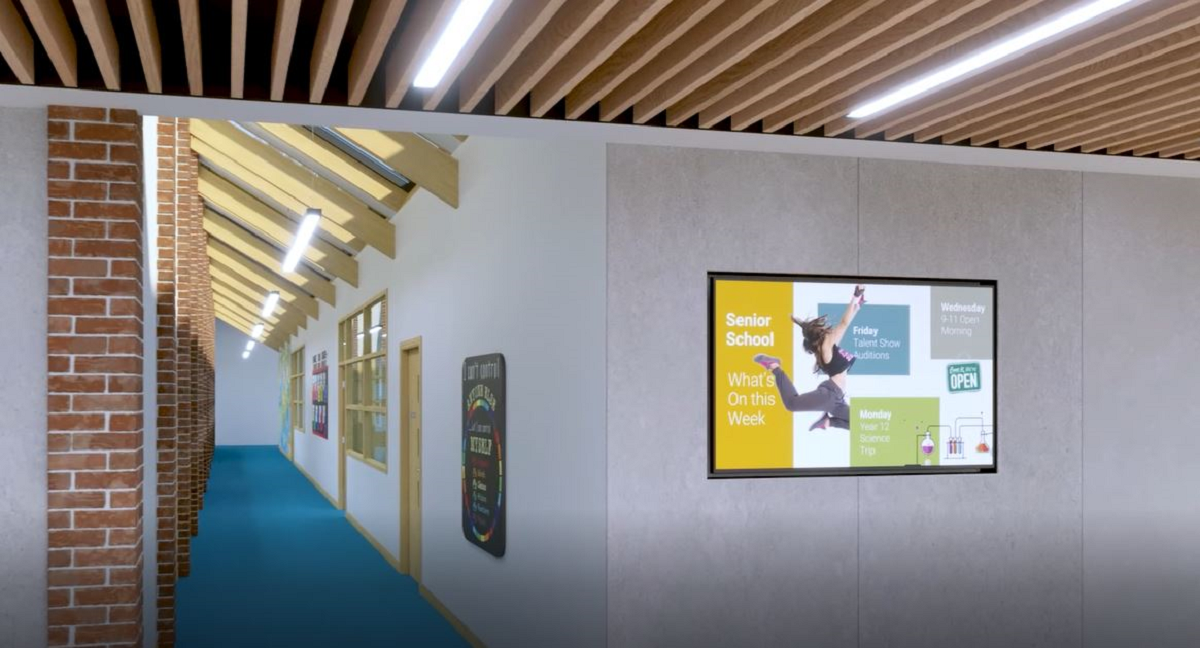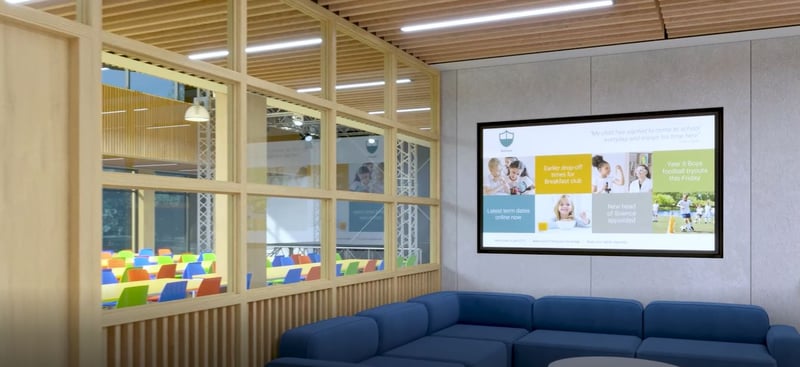
Digital natives are accustomed to receiving information in a flurry of rapid updates triggered by alerts and notifications. Their minds quickly process information as they scroll through simple messages, attractive images, and quick videos. Schools understand this and are investing and implementing hardware that mimics what everyone on a campus is familiar with – digital screens.
Digital displays placed in the high-traffic areas of a campus such as building entrances, hallways, classrooms, and more give those who pass by the information they need when they need it. Administrators of the content have learned to create messages that are simple, short, and direct so that information can be taken in at first sight.
What are some types of information that can be shared campus wide on digital displays?
- Greetings and welcome messages for visitors
- Daily, weekly lunch menus including updates
- Parent-teacher-student conference schedules
- School staff and student club meetings and minutes
- Special recognition for classroom and/or student achievements
- Calendar featuring special events and sports activities (weekly, monthly)
Displays can also help boost student participation in school-related activities such as spirit weeks, fundraising opportunities, and school-wide special events like STEM nights and art fairs. When messages are accessible and widespread, building a strong school culture is more likely.
To help ensure that pertinent information is seen by as many as possible, a high-quality digital display solution should have visually bright, anti-glare screens that do not distort any images, text, or video. These advanced displays will also have color-calibration, precise picture quality adjustment, and flicker-free viewing so that messages are clearly seen without disruption or glitches.
Smooth and user-friendly messaging capabilities will also appeal to school administrators and teachers who have access to the content-management platform. For example, the Mimio DS displays include the award-winning CleverLive platform which allows administrators to create, schedule, and broadcast information using premade templates or customized content. Teachers who have user permissions can also personalize content for their classrooms such as morning messages, Question of the Day, science lab data, streaming videos, and more.
Because digital signage can broadcast all types of information, districts are investing time and effort in finding a comprehensive solution that includes campus safety. With the growing need for alerting the campus and community of emergency events, a digital signage solution that includes silent alarm or teacher mic alert capabilities is essential. For example, the state of Texas has proposed a School Safety Standards Rule to “address school safety and ensure minimum school safety standards to address the safety of students and staff alike” in their public schools. To learn how Texas is working to do this, click here.
While using digital signage is not necessarily new to K-12 schools, how and why districts and schools use them to benefit their staff, students, and surrounding community is evolving. By considering the value of a digital signage solution and how it can adapt to future needs is worth the time and effort invested.
To explore the Mimio DS Series and learn how it can help districts and schools create a more interactive and informed campus environment, click here – Mimio DS Series.
To learn more about the robust portfolio of award-winning solutions by Boxlight, go to www.boxlight.com.



